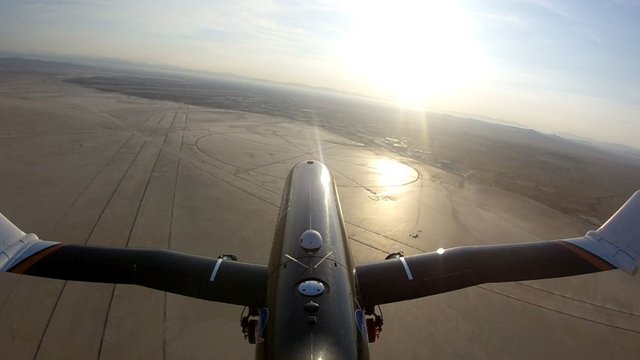NASA tests wings that bend in mid-flight, perfect for supersonic aircraft of the future
NASA has successfully tested a new type of technology that has allowed them to create planes with lighter wings, and capable of bending in mid-flight. No, it is not about hydraulic mechanisms such as flaps or slats that allow changing their position, but a new type of lighter alloy, and that is activated with heat so that the wing simply bends.
The tests have taken place at the Armstrong Flight Research Center of NASA in California, and are part of the Spanwise Adaptive Wing or SAW (Wing Adaptable to Width) project that the agency is developing in collaboration with Boeing. The development may be used in subsonic flights, but the most benefited will be possible future supersonic aircraft.
The tests have been performed on the Ptera drone, which can be modified to test different concepts and is packed with sensors to collect all the data. Your flight and the way you move can be seen in this video published by NASA itself.
As you see, the wings of the drone are equipped with a mechanism that allows them to bend. This is not driven by any hydraulic system, but with an alloy that reacts to temperature, which is known as materials with "thermal memory". They simply heat it to a certain temperature, and the alloy moves inside a mechanism to raise or lower the tips of its wings to 70 degrees.
One more step to improve supersonic flights
As we have said, subsonic flights can benefit from this technology. For example, in the case of commercial airlines, it will offer aerodynamic benefits that will improve the controllability of the aircraft. This can make the aircraft not so dependent on other heavier parts, such as the tail rudder, so that lighter and more efficient vehicles would also be achieved.

However, NASA itself ensures that the most significant potential benefits are found in supersonic flights, those in which the speed of sound is exceeded. In these cases, the system tested by the SAW may also result in more aerodynamic and efficient aircraft.
"There are a lot of benefits to bending the wing tips down to do something like 'riding on the wave' in supersonic flight, including reduced drag, which can result in more efficient supersonic flight," Matt said. Moholt, principal investigator of SAW. "With this effort, we can enable this element for the next generation of supersonic flights, not only to reduce aerodynamic drag, but also to increase performance by moving from subsonic to supersonic speeds."
After the initial test, with which they were able to demonstrate that this technology can be used successfully during a flight, the team plans to continue developing it for a few more months using the data they have obtained. If all goes well, we will have news about these folding wings on their next test flights next summer.